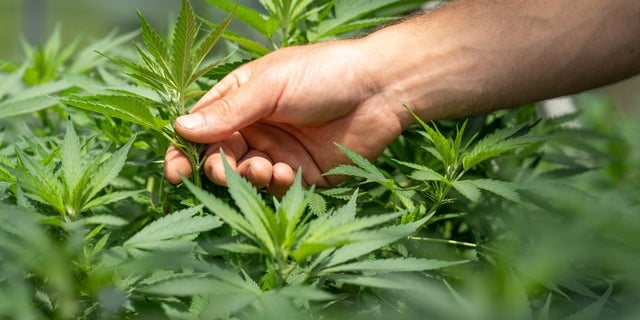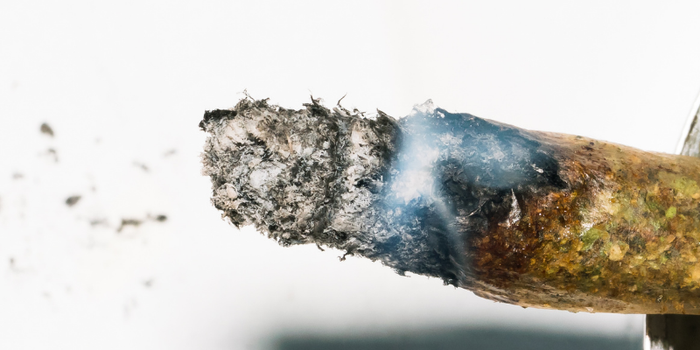Table of Contents
- Understanding Migraines
- The Role of Cannabis in Migraine Relief
- Cannabis Strains for Migraine Relief
- Methods of Consumption and Dosage
- Complementary Therapies and Lifestyle Changes
- Safety Considerations and Side Effects
- Conclusion
- FAQs
Seeking effective relief for migraines? Dive into the world of cannabis for migraines and gain insights into safety, dosage, and side effects. Research suggests that cannabis can help treat migraine symptoms, however, further studies are warranted to derive a solid conclusion. In this guide, we aim to uncover how this natural option holds promise in alleviating migraine symptoms. So get ready to embark on a journey towards improved well-being and find the relief you’ve been searching for.
Understanding Migraines
Migraines are a prevalent neurological condition that affects a significant portion of the population. Unlike common headaches, migraines are characterized by intense, throbbing pain that can last for hours or even days. They often come with other debilitating symptoms such as nausea, sensitivity to light and sound, and visual disturbances.
Migraines are distinct from other types of headaches due to their specific symptoms and underlying causes. While tension headaches and sinus headaches may result from muscle tension or sinus congestion, migraines have a more complex etiology involving various physiological and environmental factors.
Understanding the causes and triggers of migraines is crucial for effective management. Although the exact cause of migraines is still not fully understood, research suggests that a combination of genetic, environmental, and neurological factors contributes to their development. Common triggers include stress, hormonal changes, certain foods and beverages, sleep disturbances, and sensory stimuli.
The symptoms experienced during a migraine attack can significantly impact a person’s daily life. The pain and discomfort can be so severe that individuals may be unable to carry out their usual activities, including work, school, or social engagements. Additionally, the associated symptoms, such as nausea and sensitivity to light and sound, can further exacerbate the distress caused by migraines.
Migraines are a complex condition that requires a multifaceted approach to management. It is important to recognize the unique nature of migraines and the significant impact they have on the lives of those affected.
The Role of Cannabis in Migraine Relief
Cannabis, also known as marijuana, has been a subject of growing interest in the realm of migraine relief. It has shown potential benefits in alleviating the symptoms associated with migraines. While the use of cannabis for medical purposes is a complex and evolving topic, research suggests that cannabinoids, the active compounds in cannabis, interact with the body’s endocannabinoid system to provide relief from migraines.
Potential Benefits of Cannabis for Migraines
Cannabis contains numerous cannabinoids, including tetrahydrocannabinol (THC) and cannabidiol (CBD), which have been studied for their potential therapeutic effects. These cannabinoids interact with specific receptors in the body, particularly the CB1 and CB2 receptors found in the endocannabinoid system. This system plays a crucial role in regulating various physiological functions, including pain perception, inflammation, and mood.
Cannabinoids and the Endocannabinoid System
When consumed, cannabinoids from cannabis bind to the CB1 and CB2 receptors in the endocannabinoid system. This interaction can modulate the transmission of pain signals, reduce inflammation, and promote a sense of relaxation and well-being. By targeting these pathways, cannabinoids may help alleviate the intensity and frequency of migraines.
Properties of Cannabis for Relief
Cannabis contains different strains with varying compositions of cannabinoids, each potentially offering unique properties for migraine relief. THC, the psychoactive compound in cannabis, has been found to possess analgesic properties, helping to reduce pain associated with migraines. CBD, on the other hand, is non-psychoactive and has shown promise in reducing inflammation and relieving anxiety, which are common triggers for migraines.
In addition, cannabis strains with higher levels of terpene called myrcene may provide additional benefits. Myrcene has been found to have sedative and muscle-relaxing properties, potentially aiding in migraine relief by promoting relaxation and reducing muscle tension.
Supporting Research and Anecdotal Evidence
While scientific research on cannabis and migraines is still evolving, there is a growing body of evidence suggesting its potential efficacy. Several studies have explored the effects of cannabis or its components on migraines, with some showing promising results. For example, a study published in the Journal of Pain found that inhaled cannabis reduced the severity of migraine attacks and improved the quality of life in migraine sufferers.
In addition to research studies, anecdotal evidence from individuals who have used cannabis for migraines also suggests positive outcomes. Many report a reduction in the frequency and intensity of migraines, as well as relief from associated symptoms such as nausea and photophobia.
It is important to note that the legal and regulatory landscape surrounding cannabis use varies across different regions. Before considering cannabis as a potential treatment for migraines, individuals should consult with their healthcare provider, who can provide guidance and discuss potential risks and benefits based on their specific circumstances.
Best Cannabis Strains for Migraine Relief

Finding the right cannabis strain for migraine relief can be a personal journey, as different strains may have varying effects on individuals. However, several strains have garnered positive feedback from migraine sufferers. Let’s explore some highly recommended cannabis strains known for their potential to alleviate migraines:
1. Harlequin
Harlequin is a popular cannabis strain for migraine relief, particularly due to its high CBD content. CBD, or cannabidiol, is a non-psychoactive compound that has shown analgesic properties. Harlequin offers potential relief from migraines without inducing intense psychoactive effects commonly associated with THC. This strain is praised for its ability to provide pain relief while maintaining mental clarity.
2. ACDC
ACDC is another CBD-dominant strain that has gained recognition for its potential therapeutic effects, including migraine management. With its high CBD content and low THC levels, ACDC is known for its anti-inflammatory and pain-relieving properties. This strain may help reduce migraine-related inflammation and alleviate pain without causing significant psychoactive effects.
3. Blue Dream
Blue Dream is a well-known and widely enjoyed cannabis strain that offers a balanced hybrid experience. It combines the calming effects of indica strains with the uplifting properties of sativa strains. Blue Dream may provide relief from migraine symptoms while keeping the mind clear and focused. It is a suitable option for individuals seeking relief from migraines without feeling overly sedated or mentally foggy.
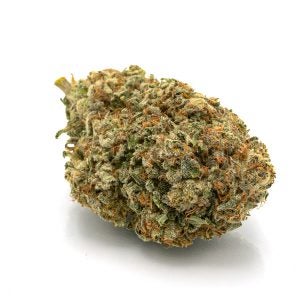
4. OG Kush
OG Kush is an indica-dominant strain that has gained a reputation for its potent analgesic and relaxing effects. This strain may help alleviate migraines by reducing pain and inducing a sense of calm and relaxation. OG Kush is often sought after by individuals looking for a strain that can provide both physical and mental relief.
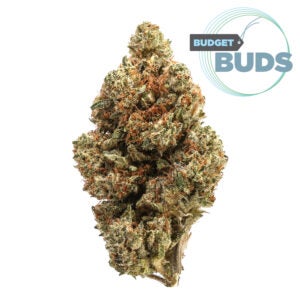
5. Sour Diesel
Sour Diesel is a sativa-dominant strain known for its energizing effects. While migraines can often leave individuals feeling fatigued and mentally foggy, Sour Diesel’s uplifting properties may help combat these symptoms. By reducing fatigue and promoting mental focus, this strain may offer relief to those experiencing migraines.

6. Purple Kush
Purple Kush is an indica strain highly valued for its potent sedative properties. It is often sought after by individuals seeking relief from pain and insomnia. The sedating effects of Purple Kush may help ease migraine-related pain and promote restful sleep, which is essential for recovery during a migraine attack.
When considering cannabis strains for migraine relief, it is important to remember that individual experiences may vary. It is advisable to consult with a healthcare professional or a knowledgeable budtender who can provide guidance based on your specific needs and preferences.
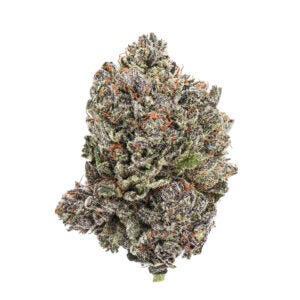
Methods of Consumption and Dosage
Cannabis can be consumed in various ways, and each method offers different onset times and durations of effects. When using cannabis for migraine relief, it’s important to understand the available consumption methods and consider dosage considerations based on individual tolerance and desired outcomes.
Overview of Different Methods of Cannabis Consumption
Common methods of cannabis consumption include smoking, vaporizing, and consuming edibles. Smoking involves inhaling the smoke from dried cannabis flowers, while vaporizing heats the cannabis to a temperature that releases cannabinoids and terpenes without combustion. Edibles are cannabis-infused food products that are ingested and metabolized by the body.
-
-
-
MOTA – THC Iced Tea (150mg)
$14.00150mg THC You don’t need to master croquet to learn this simple bit of ye olde English lifestyle lore: on a hot summer’s day — or anytime thirst needs refreshing—… -
MOTA – THC Chocolate Bars (300mg)
$24.00300mg THC Divided into 6 squares, these medicated chocolate bars are convenient and easy to dose. Ranging in flavour, these chocolate bars allow for a flexible methods of medicating. Dosage: 300mg THC… -
MOTA – THC Tinctures (900mg to 1000mg)
$50.00 – $70.00900mg to 1000mg THC/CBD MOTA's cannabis tinctures, available in Indica, Sativa or 1:1 Pain | Inflammation | Anxiety | Stress | Depression | Insomnia | Restlessness | Muscle Spasms |…
Onset Time and Duration of Effects
The onset time and duration of effects can vary depending on the consumption method. Smoking and vaporizing typically have a faster onset, with effects felt within minutes. However, the duration of effects may be relatively shorter, lasting a few hours. Edibles, on the other hand, have a slower onset, often taking up to an hour or more to feel the effects. However, the effects of edibles can last significantly longer, up to several hours or more.
Dosage Considerations and Starting with Low Doses
Determining the right dosage of cannabis for migraine relief is highly individualized. It’s important to start with low doses and gradually increase as needed. Factors such as tolerance, metabolism, and sensitivity to cannabis can influence the optimal dosage. It is advisable, to begin with a small dose, assess the effects, and titrate slowly to find the dose that provides symptom relief without unwanted side effects.
Complementary Therapies and Lifestyle Changes
Cannabis can be complemented by various therapies and lifestyle changes to enhance migraine relief. Integrating these approaches alongside cannabis consumption can contribute to a holistic and comprehensive management plan.
Introduction to Complementary Therapies and Lifestyle Changes
Complementary therapies for migraine relief include relaxation techniques, stress management, and sleep hygiene. Engaging in practices such as meditation, deep breathing exercises, and progressive muscle relaxation can help alleviate stress and promote relaxation. Additionally, maintaining a regular sleep schedule, practicing good sleep hygiene, and ensuring adequate rest can support overall well-being.
Identifying and Avoiding Trigger Factors
Identifying and avoiding trigger factors is crucial in managing migraines. Certain foods, beverages, environmental factors, and lifestyle habits can trigger migraine attacks. Keeping a migraine diary to track potential triggers and noting their association with migraines can aid in identifying and subsequently avoiding those triggers. This, in conjunction with cannabis use, can help reduce the frequency and severity of migraines.
Benefits of Exercise, Dietary Modifications, and Alternative Therapies
Regular exercise, when appropriate and approved by healthcare professionals, can have beneficial effects on migraines. Physical activity releases endorphins, reduces stress, and promotes overall well-being. Making dietary modifications, such as reducing processed foods, caffeine, and alcohol intake, and incorporating nutrient-rich foods, can also contribute to migraine management. Additionally, alternative therapies such as acupuncture, massage, and chiropractic care have been reported to provide relief for some individuals.
Safety Considerations and Side Effects

When using cannabis for migraines, it is important to be aware of safety considerations and potential side effects.
Explanation of Safety Considerations
Safety considerations include understanding the legal regulations surrounding cannabis in your region and ensuring responsible use. It is important to source cannabis from reputable and legal sources. Additionally, individuals with certain medical conditions or who are taking medications should consult with healthcare professionals before incorporating cannabis into their migraine management plan.
Common Side Effects and Mitigation
Common side effects of cannabis use can include dry mouth, red eyes, increased heart rate, and temporary cognitive effects. Staying hydrated, using eye drops, and starting with low doses can help mitigate these side effects. It’s important to be mindful of the potential impact on cognitive function and avoid activities that require full mental alertness until the effects have subsided.
Addressing Potential Risks
While cannabis is generally considered safe for most individuals, there are potential risks associated with its use. These include dependency, overconsumption, and the potential for cannabis use disorder. It is crucial to use cannabis responsibly, avoid excessive consumption, and be aware of signs of dependency or negative impacts on daily functioning. If any concerns arise, seeking guidance from healthcare professionals is recommended.
Importance of Responsible Use and Consulting with Healthcare Professionals
Responsible use of cannabis involves understanding and adhering to legal regulations, being mindful of personal limits, and considering individual health circumstances. Consulting with healthcare professionals can provide valuable guidance tailored to your specific needs, ensuring the safe and effective use of cannabis for migraine relief.
Conclusion
In conclusion, by delving into the diverse world of cannabis strains, exploring various consumption methods and dosage considerations, and embracing complementary therapies and lifestyle changes, we unlock a realm of potential relief for migraine sufferers. With responsible use and guidance from healthcare professionals, cannabis can become a valuable ally in the battle against migraines, offering a path towards improved well-being and the reclamation of control over one’s life. So, dare to embark on this transformative journey, and let cannabis be the catalyst that brings you closer to a life free from the shackles of migraines. Your future of empowered healing awaits.
FAQs
Can cannabis be used to treat migraines?
Cannabis has shown the potential to provide relief for migraine sufferers. Research suggests that cannabinoids in cannabis may help alleviate migraine symptoms such as pain and nausea. However, individual responses to cannabis can vary, and it is essential to consult with healthcare professionals for personalized advice.
Which cannabinoid is best for migraines?
CBD (cannabidiol) is often considered a cannabinoid with potential benefits for migraines. It exhibits anti-inflammatory and analgesic properties, which may help reduce migraine-related pain and inflammation. However, the effectiveness of cannabinoids can vary among individuals, so finding the right balance and cannabinoid profile may require some experimentation.
What is the best herb for migraines?
While cannabis is a commonly explored option, herbs such as feverfew and butterbur have been traditionally used for migraine relief. These herbs contain compounds that may help reduce the frequency and intensity of migraines. It’s important to note that individual responses may vary, and it’s advisable to consult with healthcare professionals before incorporating any herbs into a migraine management plan.
What’s good for migraines: sativa or indica?
The choice between sativa and indica strains for migraines depends on individual preferences and symptom profiles. Sativa strains are often associated with uplifting and energizing effects, which may help combat fatigue and promote mental focus during migraines. Indica strains, on the other hand, are known for their potential relaxation and sedative properties, potentially aiding in pain relief and promoting restful sleep. Experimenting with different strains and observing personal responses is crucial to finding the most suitable option.
Does sativa affect the brain?
Sativa strains, like other cannabis strains, can affect the brain due to the presence of cannabinoids such as THC (tetrahydrocannabinol). THC is known for its psychoactive properties, which can induce changes in perception, mood, and cognition. Sativa strains are typically higher in THC content, meaning they may have more pronounced effects on the brain. It’s important to be aware of individual tolerance, start with low doses, and use cannabis responsibly to mitigate any unwanted effects.












